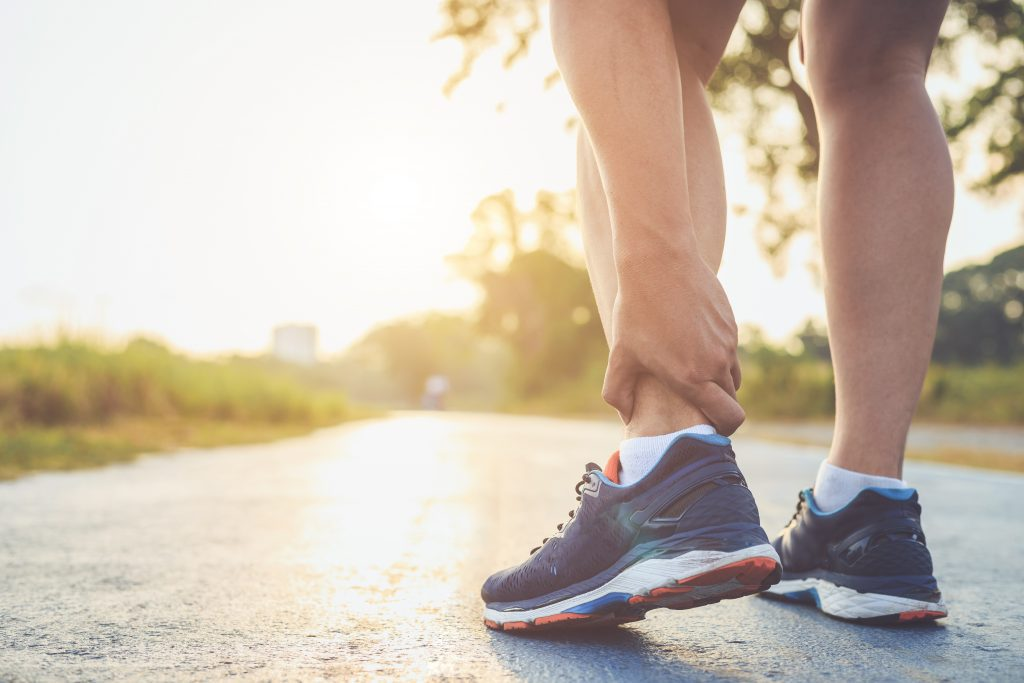
Best ankle braces and when to use them
Share
It seems that no matter what sport you're watching or playing right now, one of the athletes might be wearing an ankle brace. The best ankle brace is an effective preventative measure for many as 2 million ankle sprains occur each year.
Ankle braces have been around for a long time, but have been on the playing field more frequently since the early 1990s due to improved designs and lower costs. Today, they seem to be everywhere.
This might make you wonder what ankle braces might do for us and how to use them. After all, you've seen ankle braces worn for many different exercise-based activities, from gentle yoga and walking to full-fledged high-intensity exercise.

How Ankle Brace Works
First, consider the structure of the human body. Ankle muscles, ligaments, and tendons, and bones from the foot to the buttocks, internally support the ankle.
When you wear an ankle brace it acts as an external support as it restricts certain movements such as plantar flexion/varus, which is defined as movement at the ankle joint that moves the foot forward away from the leg and inward turn.
If you are someone who suffers from frequent ankle pain due to tendonitis or plantar fasciitis, a brace may offer some protection from further injury. Also, compressing can help relieve mild pain.
How Ankle Braces Affect Injuries
Current data show that the use of ankle braces in high school age athletes reduces the incidence of acute ankle injuries; one study reduced the relative risk by 47%. Unfortunately, even the best ankle brace can't reduce the severity of an injury. Still, they can give you an idea of where your ankle is in space. To be most effective, braces should fit snugly when you wear your shoes.
Sadly, just because you're wearing an ankle brace doesn't mean you're guaranteed protection against injury, but it can prevent you from re-weighting the old one. Or, if you're recovering from an accident, a brace may help with the recovery process. You may also want to wear it as you recover from ankle surgery, limiting movement and keeping your ankle supported to aid recovery.
Which ankle support is best for me?
Ankle braces and braces are designed to vary widely, and choosing the right one for you depends on many factors, including the type of injury and/or physical activity.
Weak or unstable ankle
If you have weak or wobbly ankles and just need a little extra support, a stable ankle brace with extra side support or straps can help keep your ankle from rolling over. A key benefit is the aid in proprioception. No ankle brace can completely prevent ankle sprains. Therefore, it is also important to practice through ankle rehabilitation.
For light to moderate support, the neoprene ankle support with straps is ideal. If you have loose ligaments and need more support, then the Advanced Ankle Brace with Shoulder Straps is your choice.
Ankle braces for specific injuries
Ankle Sprain
All ankle sprains should be treated according to the PRICE principles of protection, rest, ice, compression, and elevation. Therefore, it is best to use elastic ankle braces in the early stages and immediately after an ankle sprain. Compression helps reduce sales and provides a low level of support.
Later, when you start walking and running around on your injured ankle, an ankle brace with more lateral (lateral) support will be better. While no ankle support can completely prevent injury, wearing a stabilizing brace can help you get a better feel for proprioception as you recover. It is important to do proprioceptive exercises to improve ankle strength in the long term.
Achilles tendonitis
Achilles tendinitis or more accurately Achilles tendinopathy is the inflammation/degeneration of the Achilles tendon. Professional Achilles tendon braces apply pressure around the tendon. As a result, the strain on the tendon is reduced.
Other ankle tendon injuries
Other injuries that affect the tendons around the ankle include peroneal tendinitis and tibial tendonitis. These are usually chronic, overuse injuries. Wearing a neoprene ankle brace helps maintain body temperature, protects joints, and aids in the healing process. Tendons work better when they are warm.
when you should see a doctor
Even a seemingly benign ankle injury can cause considerable pain, so it's important to know when to see a doctor. Usually, if you have an open wound or are unable to put any weight on your foot, you need to travel for treatment.
Seek medical attention if there is severe pain or swelling, or if there are obvious signs of infection: such as a red, tender, or hot ankle, or a fever over 100 degrees Fahrenheit. Likewise, if your swelling doesn't improve after two to five days of home treatment, or if your persistent pain doesn't improve after a few weeks, it's time to get checked out.
Your doctor can determine if wearing a brace is right for you. The best ankle braces will provide support while also feeling comfortable. Look for neoprene or knitted fabrics and make sure they fit. Consult the size chart listed on the box for the best fit and support.










